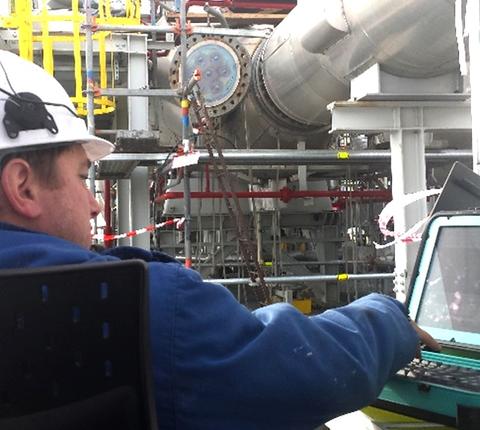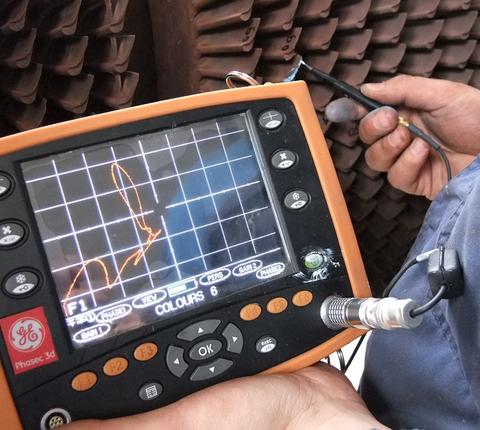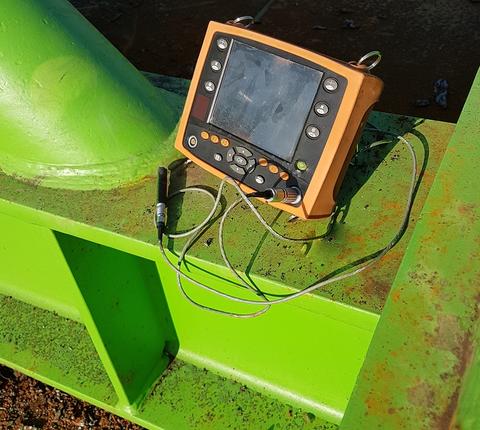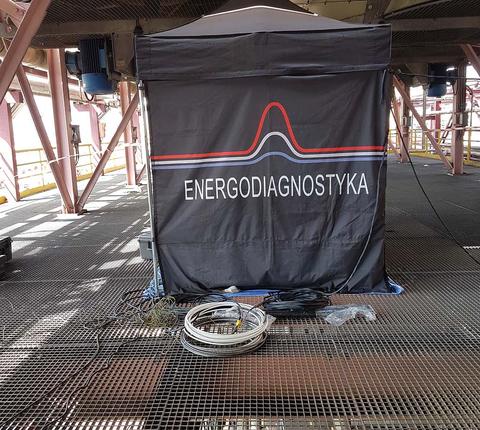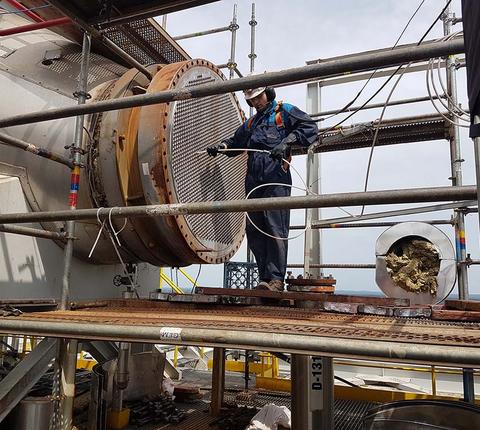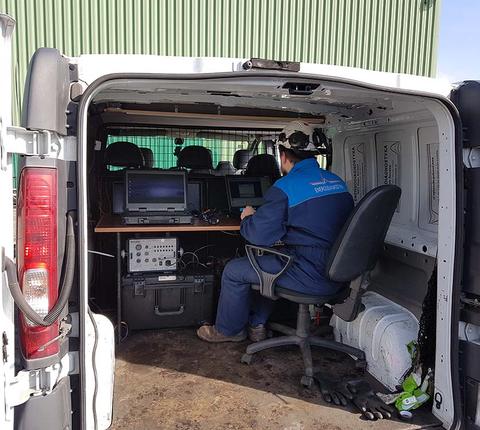Eddy current testing - ET
Eddy current testing allows for detection of surface and subsurface fractures in conductive materials, both magnetic and non-magnetic. The undoubted advantages of the method include the possibility of testing through paint coatings. There is no need to remove paint for testing what significantly contributes to the reduction of test costs.
Eddy current testing enable detecting such discontinuities as: cracks, sticking, rolling, scales, inclusions. Testing with the eddy current method consists in creating eddy currents in the surface layer of the tested object, in the area of impact of a fast-changing magnetic field on the object, produced by inductive transducers. The advantage of the method is the possibility of very fast, 100% testing of products in high-volume production, for example in the production of welded, seamed or pressure welded pipes.
Advanced eddy current tests offer a number of possibilities in the automation of tests, processing and visualization of test results. We use multi-transducer technology, so-called ECA (Eddy Curent Array), which is used for surface mapping or weld testing without the need to remove paint coatings. Please contact us for further information.
The method is commonly used for testing pipes of heat exchangers in nuclear and conventional power plants, in the chemical, refinery, sugar, paper and food industries. The speed of testing, full registration of indications, precise location and marking during the test are enormous convenience and guarantee a very high quality of the tests. The systems used by our company come from the world's largest producers and are characterized by very high reliability of tests.
Such tests require a lot of experience and appropriate qualifications of the staff.
As the first in Poland, we have received the approval of the Office of Technical Inspection for testing with eddy currents of pipes.
Pipes made of materials such as brass, copper, stainless steel, carbon steels, aluminum and its alloys, inconel, and hastelloy are subject to testing. Appropriate testing techniques also enable the examination of ribbed tubes. The basic defects detected in the ET tests are: wall thickness defects (distinguishing their position from the inside or outside) resulting from erosion or corrosion, foreign material inclusion, perforations, grooves, cracks, deformations. All of the above defects are very precisely localized, also under supporting structures. Please contact us in order to obtain more information about the testing of heat exchange devices.

